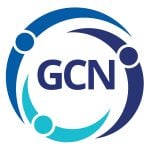Could you use some tips on how to perfect your elevator pitch?
Ahhh, the elevator pitch! Read to get insights from nine career coaches, authors, speakers, and/or entrepreneurs.
These tips on how to perfect your elevator pitch as a working adult are useful whether you are unemployed, self-employed, or employed. You are probably engaging in meeting people, and you need to have some kind of an elevator pitch to introduce yourself. One size does not fit all. It depends on the audience and the circumstances.
Over the years, I have collected some resources from various people from their handouts, presentations, or articles to share, so you can try different formulas and perfect your elevator pitch.
The elevator pitch needs to pique someone’s interest so they want to ask to learn more and it needs to be short and memorable. You don’t want to try to seal the deal, but open a door to conversation and don’t make it too technical.
One quick formula is: I help (audience), do or understand (problem), so that (desired outcome).
My recent pitch has been: I guide you to your keywords to beat the bots!
Credit to Alex Freund for the Elevator Pitch Tips
Alex is a speaker and an interview coach who helps job seekers improve their in-person and video interviewing skills.
Alex’s Tips for creating a memorable Elevator Pitch
- It must be short so that you can easily remember it and the listener can quickly understand it. A long and ambiguous Elevator Pitch is a wasted opportunity.
- Latch on to something that the listeners already know. For example, I am [YOUR NAME], and I am a matchmaker. I bring together the Product Development team with the appropriate manufacturer of dental equipment in China. People call me Mr. Master Matchmaker.
- Create an association in the listeners’ minds with something they already know. For example, I am known as the Landing Expert. My audience is primarily people in transition, and everybody knows what the word landing means when looking for a job.
- If possible, use a short sentence that rhymes. Being concise helps with memorization. Remember the remark Johnnie Cochran used in the O.J. Simpson trial so effectively. “If it doesn’t fit, you must acquit.”
- Use a cliché if appropriate. For example, if you are a photographer, you can say “a picture is worth 1000 words” as a part of your pitch.
- You can introduce an element of surprise. For example, “I saved a woman’s life.” This statement is almost begging for “please tell me more.”
- Writing a successful Elevator Pitch is challenging. You must write it out, edit it, and then practice reciting it aloud in front of a mirror many times until you feel comfortable.
Alex has helped many people improve their interviewing skills and has a valuable 5-session group with mock interviews starting February 1st.
Credit to Brynne Tillman for the LinkedIn Headline Formula (which could also be used as an elevator pitch)
Brynne is a LinkedIn and Sales Navigator Trainer, Keynote Speaker, Author, Podcaster, and has a Group Coaching Membership.
Brynne’s formula for the headline is to include three elements:
- Who you help
- How you help
- Why should they care
If you are in sales, an entrepreneur, or business owner who wants to start more sales conversations, you will not regret exploring what Brynne has to offer.
Credit to Ford Myers for the Positioning Statement Template
Ford is a speaker, an award-winning career coach, and author of Get the Job You Want Even When No One’s Hiring
I am a (provide professional “tag” or identifier) … with … years of experience in the … industry / field / niche / role. My strengths include … I have specific expertise in … I am now seeking (describe the type of position, opportunity, or role you are seeking – not the title – as precisely as you can, along with what/how you can contribute).
Ford’s Example: I am a Project Management Professional with six years of experience in the pharmaceutical industry. My strengths include organization, problem-solving, and management. I am known for my ability to improve efficiency and develop profitable business processes. I am exploring opportunities where I can significantly improve the productivity and efficiency of business projects.
Ford’s book is excellent and covers much more than the positioning statement. I have read it cover to cover and have it highlighted and annotated.
Credit to Ken Sher for the Elevator Pitch Template
Ken is a speaker, career coach, and executive coach.
Problem:_____are often frustrated by_____
Solution:_____ eliminates the need to (Customer’s Old Solution)
Why You: For (duration) (Customer type) I’ve been able to provide the best solutions in (Customer’s Industry)
Value: “The bottom line is that you can (spend less/make more) ( time/money) (Action)
CTA: “I’ll give you a call to learn more about your situation (Get contact info.)
Ken’s Example:
Problem: Leaders are often frustrated by a lack of decision-making and are often frustrated by the initiative and engagement from their team.
Solution: “When leaders build TRUST, their teams are transformed to act like owners by changing the way they manage their teams.”
Why You: “I spent nearly 25 years at Johnson & Johnson where I led leadership development teams to design, develop & deliver world-class training in this area.”
Value: “The bottom line is that you can transform any team by focusing on five elements of TRUST.
CTA: “I’d love to discuss this with you further. When can we schedule a time to talk?”
Ken provides some excellent content on his website and in his LinkedIn posts about so many more topics than just the elevator pitch, and he does focus on the five elements of T.R.U.S.T.
Credit to Laura Templeton for the Elevator Pitch
Laura is a virtual keynote speaker, presenter, moderator, and author of 30 Second Success: Ditch the Pitch and Start Connecting.
Your 30 Second Message for use when Networking
What is their pain?
How do you solve it?
Call to Action
Who you are
In answer to “So, what do you do?” Tell people how you solved a problem in your current or previous work.
- I help…
- I develop…
- I implement…
- I create…
Laura suggests keeping your introduction short and sweet to continue the conversation. There is a lot more to the pitch, which you can learn about in Laura’s book, and yes I wrote a testimonial for this book!
Credit to Johnny Walker for the Elevator Pitch Template
Johnny is a speaker and an executive career coach for six-figure earners.
Johnny’s formula is: I help PERSON at PLACE achieve PURPOSE as measured by PERFORMANCE by doing PROCESS.
For examples using the formula above and so many more resources, visit Johnny’s LinkedIn page and website.
Credit to Steve Woodruff for the Memory Dart
Steve is a consultant, speaker, and author of Clarity Wins.
In his Memory Dart article, Steve notes that brevity is key at 15 seconds with a clear and concise one-sentence statement and offering that includes a vivid image or analogy. When someone invites you to give a more detailed explanation, you can expound with more details.
Steve’s personal memory dart example is: “I’m the world’s only Clarity Consultant. In less than a day, I help individuals and companies discover their offering and distill it into a clear, compelling message.”
Credit to Ari Weinstein for his 10 Second Brand Message
As the author of Personal Branding at Work, Ari Suggestions this formula for a 10 second introduction:
Who you are (name, title) YOU
What you do, for whom YOUR WORK
How your work matters IMPACT
Here is Ari’s example: I’m a coach. I help career professionals strengthen their personal brand messaging so they can find new opportunities at work.
Credit to Carmine Gallo for the Alternatives to The Elevator Pitch
Carmine is a keynote speaker, CEO Advisor, Harvard Instructor, and Best Selling Author of numerous books available on Amazon.
In his Forbes article, Carmine shares six alternatives to the elevator pitch:
1) the one-word pitch that defines your brand
2) The question pitch
3) The rhyming pitch
4) The subject-line pitch
5) The Pixar pitch
6) The Twitter pitch
Read the article for details and examples to ignite your creativity.
Credit to Seth Godin on Encounters in an Elevator
Seth is the founder of the altMBA, a blogger, entrepreneur, and author of numerous books available on Amazon.
In his article, No One Ever Bought Anything in an Elevator, Seth notes not to pitch the project but the meeting regarding the project, so that begs the listener to ask to hear more.
In other words, it’s a conversation starter. Read his article to learn more.
There are many different styles of elevator pitches above, so try the different approaches and see what resonates with you.
NEXT STEPS
Subscribe to my newsletter on LinkedIn™ for bright ideas on how to manage your career.
If you need a resume or LinkedIn™ profile to get you to your next step, book a call to chat! Can’t beat a free discovery call!
Join as a member at https://greatcareers.org/membership of the #1 business networking association on the Philadelphia Business Journal’s Book of Lists five years in a row!
To support our charity at KeepOnSharing.com and use the referral code Career
Follow #GreatCareersPHL
BIO
Lynne M. Williams is the Executive Director of the Great Careers Network, a volunteer-run 501(c)3 nonprofit organization that provides career development and networking connections for 1) job seekers in career transition, including veterans, and 2) employed and self-employed for career management.
Aside from writing keyword-focused content for ATS resumes and LinkedIn profiles, Lynne is writing her doctoral dissertation on LinkedIn for Job Seekers. She is a contributing author on “Applying to Positions” in Find Your Fit: A Practical Guide to Landing the Job You Love, along with the late Dick Bolles, the author of What Color is Your Parachute?, and is also a speaker oncareer topics.




